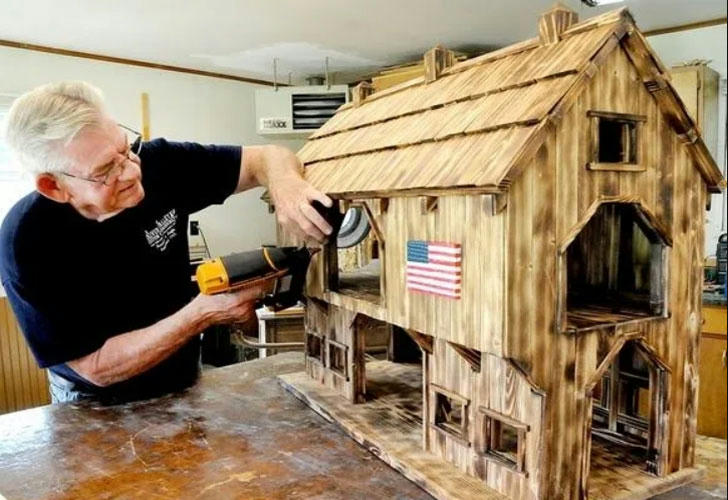Master Woodworking from Home: Top Online Courses and Essential Tools
Ready to turn raw lumber into beautiful furniture, décor, or gifts? Online woodworking courses let you learn at your own pace—no commute, no messy workshop needed up front. In this guide, we’ll explore why taking a woodworking course online makes sense, what to look for in a program, and the essential tools you’ll need to tackle your first projects with confidence.

1. Why an Online Woodworking Course?
Flexibility. With video lessons you can pause, rewind, and revisit tricky steps. Learning around work or family schedules is a breeze.
Cost‑Effective. No expensive classroom fees or travel costs. Online programs often include digital plans and community forums.
Safety First. Beginners can master tool handling and joinery techniques in a low‑risk virtual environment before firing up loud machines.
Project Variety. From simple shelves and picture frames to complex cabinets and turned bowls, courses often include multiple builds to test your skills.
Community Support. Many platforms offer student forums or live Q&A sessions—perfect for troubleshooting and sharing progress photos.
2. Choosing the Right Course
When you’re browsing woodworking schools online, keep these criteria in mind:
- Instructor Credentials. Look for pros with years of shop experience and clear teaching styles.
- Lesson Structure. Are projects broken into manageable modules? Video length under 20 minutes helps retention.
- Project Plans Included. Downloadable cut lists, 3D diagrams, and shopping lists save you time.
- Support Resources. Access to a community forum or direct instructor feedback keeps you motivated.
- Safety Coverage. Proper use of saws, routers, and dust collection should be taught before any power tool demo.
3. Setting Up Your Home Shop
You don’t need a dedicated workshop right away. A section of the garage or a corner of the basement works fine:
- Sturdy Workbench. A simple 2x4 and plywood build from your course’s first lesson is ideal.
- Good Lighting. Overhead LED strips plus a bench lamp keep your cuts accurate.
- Dust Control. A shop vacuum or small dust collector protects your lungs and keeps the floor safe.
- Power Access. Extension cords and surge‑protected outlets ensure you can plug in a drill, sander, or miter saw.
- Storage. Wall hooks or shelving for hand tools keep your workspace tidy and efficient.
As you progress, you can upgrade to dedicated machines. But to start, focus on quality hand tools and portable power tools.
4. Essential Beginner Tools
Here’s the toolkit to tackle your course projects and daily practice:
- Measuring Tape & Combination Square. Accuracy is everything—these two tools help you mark perfect 90° lines and repeat measurements.
- Set of Chisels. From paring to bench chisels, a basic set allows you to clean up joints and carve details.
- Block Plane. Smooth edges, chamfer corners, and trim tenons with precision.
- Cordless Drill (18V). Drilling pilot holes and driving screws are core skills in every build.
- Random Orbit Sander. Sanding before finish is faster and leaves a swirl‑free surface.
- Clamps (bar and spring). Holding parts firm while glue dries is non‑negotiable.
- Wood Glue & Waterproof PVA. A good bond beats nails every time in clean, dry joints.
- Hand Saw or Japanese Pull Saw. Perfect for quick crosscuts and dovetail practice.
These basics let you complete small builds, practice joinery, and follow along with most online modules.
5. Specialty Tools to Level Up
Once you’ve mastered the basics, these gear additions unlock advanced techniques:
- Pocket Hole Jig. Create strong, hidden joints in minutes—perfect for frames and face‑frame cabinets.
- Router & Router Table. Round over edges, cut grooves, and make decorative profiles.
- Miter Saw. Quick, square crosscuts and angled cuts for frames, trim, and furniture legs.
- Doweling Jig or Biscuit Joiner. Align boards precisely and create seamless joints.
- Drill Press or Bench Drill. Consistent holes for dowels and hardware installation.
Adding one tool at a time based on your course assignments keeps costs manageable and prevents clutter.
6. Materials, Safety, and Finishes
Learning to select wood species and apply finishes is as important as sawing:
- Wood Selection. Start with affordable softwoods like pine or poplar for practice; move to hardwoods like oak, maple, or walnut for final projects.
- Sandpaper Grits. A progression from 120 to 220 grit readies surfaces for stain or varnish.
- Finishes. Choose a water‑based poly for quick drying or a classic tung oil for a warm, hand‑rubbed sheen.
- Protective Gear. Safety glasses, hearing protection, and a dust mask safeguard your health.
- Sharpening Kit. A whetstone or sharpening system keeps your chisels and planes at peak performance.
Courses often include modules on material selection and finishing techniques—follow them closely to avoid costly mistakes.
7. Tips for Online Learning Success
- Follow the Schedule. Set aside a regular “shop time” each week, just like a real class.
- Prepare Your Materials. Gather lumber, fasteners, and hardware before each lesson.
- Join the Community. Post pictures of your work, ask questions, and help peers.
- Review and Repeat. Pause and rewatch difficult segments until the technique clicks.
- Showcase Your Work. Build a portfolio of your projects—great for future job applications or personal pride.
With these strategies, you’ll transform from a hobbyist to a confident woodworker, one build at a time.
Conclusion
An online woodworking course combines hands‑on craftsmanship with the convenience of learning from home. Armed with the right program, a few essential tools, and a dash of creativity, you’ll tackle everything from simple shelves to stunning furniture pieces. So pick your course, stock your bench with the gear above, and get ready to nail your first build in 2025!
Happy woodworking!
